Let’s get one thing clear: I’ve never seen a dog ice skate on two legs while pulling off a high-speed, poo-on-the-move. Yet here I am, witnessing it, during a short ‘taste’ of the Fjällräven Polar Challenge (this taster is three days; the full event is run over five days) hundreds of kilometres above the Arctic Circle.
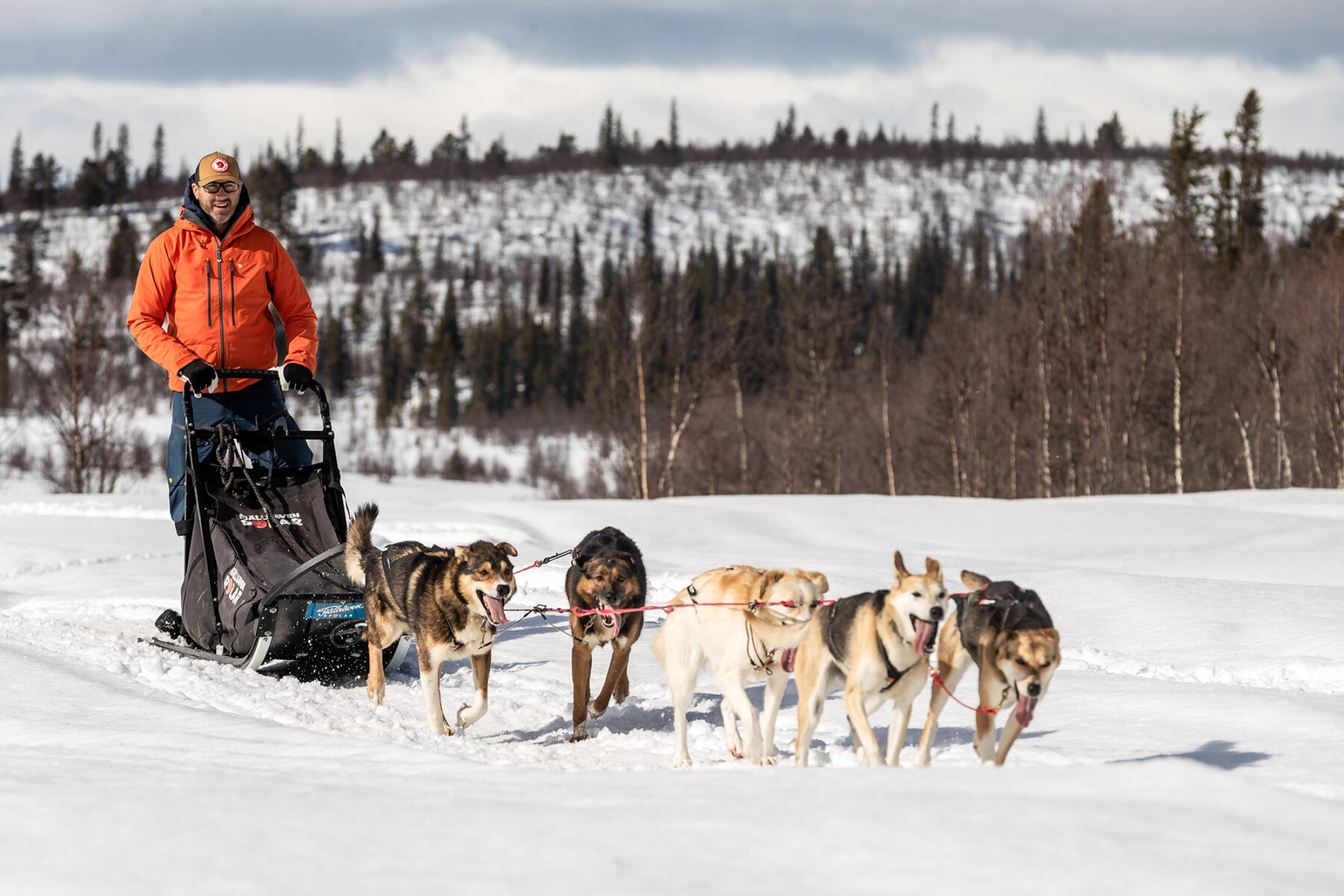
I can’t dwell on this marvel; I’m clinging for dear life as five Alaskan huskies drag me across a frozen Arctic lake on what looks like a body bag strapped to a makeshift billycart on flimsy skis. Everything’s fine on the flat, but we’re approaching a forest, and threading a sled through dense spruce trees is an expert-level activity best left to experienced Arctic adventurers, not myself, on day two of my newfound mushing career. We speed towards the trees, and my anxiety spikes and I recall our lead musher’s golden rule: “Whatever you do, never let go. You’ll be left behind.”
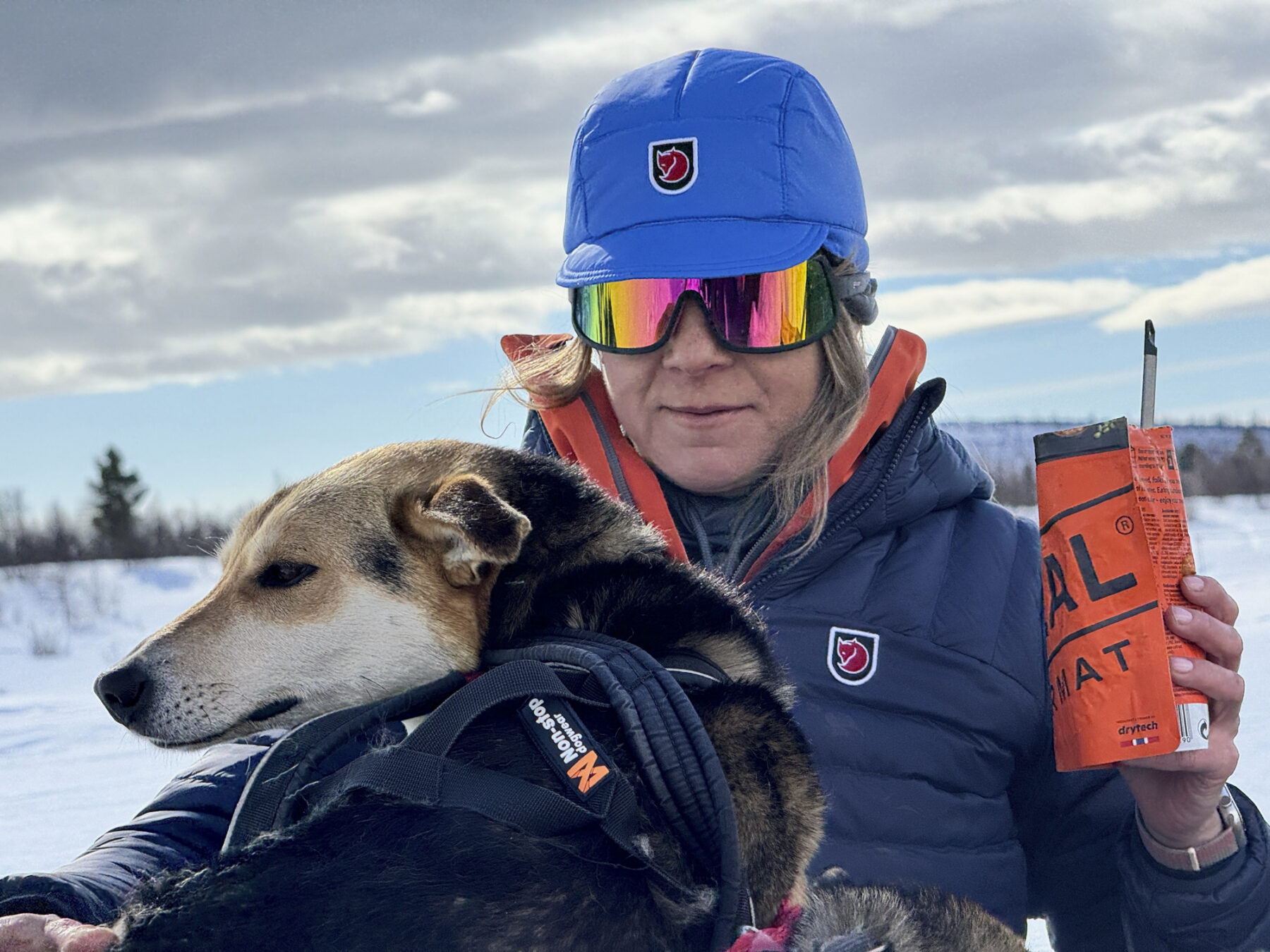
As we whip past branches, I practice my ‘bum-wiggle’ manoeuvre to steer my sled. The craft, loaded with gear, refuses to budge. My dogs turn left, and so does my sled, but there’s a solid-looking trunk between me and them. I wiggle again, pressing my outside foot on the brake. The runners shift, but not enough. At the last second, I throw my weight into a desperate ‘twerk’ that would make Miley Cyrus proud and brush past the tree. I grin, imagining myself as the smoothest dad on the dance floor. My smugness doesn’t last long when I realise I can only twerk to the right, and the next tree demands a ‘lefty’. I do the only thing I’ve been instructed to do when all else fails – I hold on tight. I clip the tree, and then my face hits the snow, but importantly, I take the sled with me. We slide to a halt, and my panting husky team look back at me with apparent disdain. I suspect their barking translates to, “What is a middle-aged, twerking, Aussie doing in our Swedish Lapland home?” And my canine friends have a point.
Extreme inspiration
In truth, it’s all the fault of a pair of khaki trousers and a global pandemic. During the 2020 lockdown, my adventures were put on hold. Stuck at home, I wrote gear reviews for brands I couldn’t pronounce and gear I couldn’t use outside of my bubble. That’s when I discovered Fjällräven. Established in 1960, the Swedish brand still promotes waxing their apparel with paraffin and beeswax to increase wind and water resistance and durability; my Fjällräven Vidda-Pro trousers (read the review, here) became my go-to for everything. I also accidentally became ‘hip’. I noticed that royals and celebrities were sporting the same Arctic fox logo as my trousers, and Fjällräven Kånken backpacks adorned nearly every hipster south of the North Pole. I wondered if there might be more to the Arctic fox beyond just cool gear.
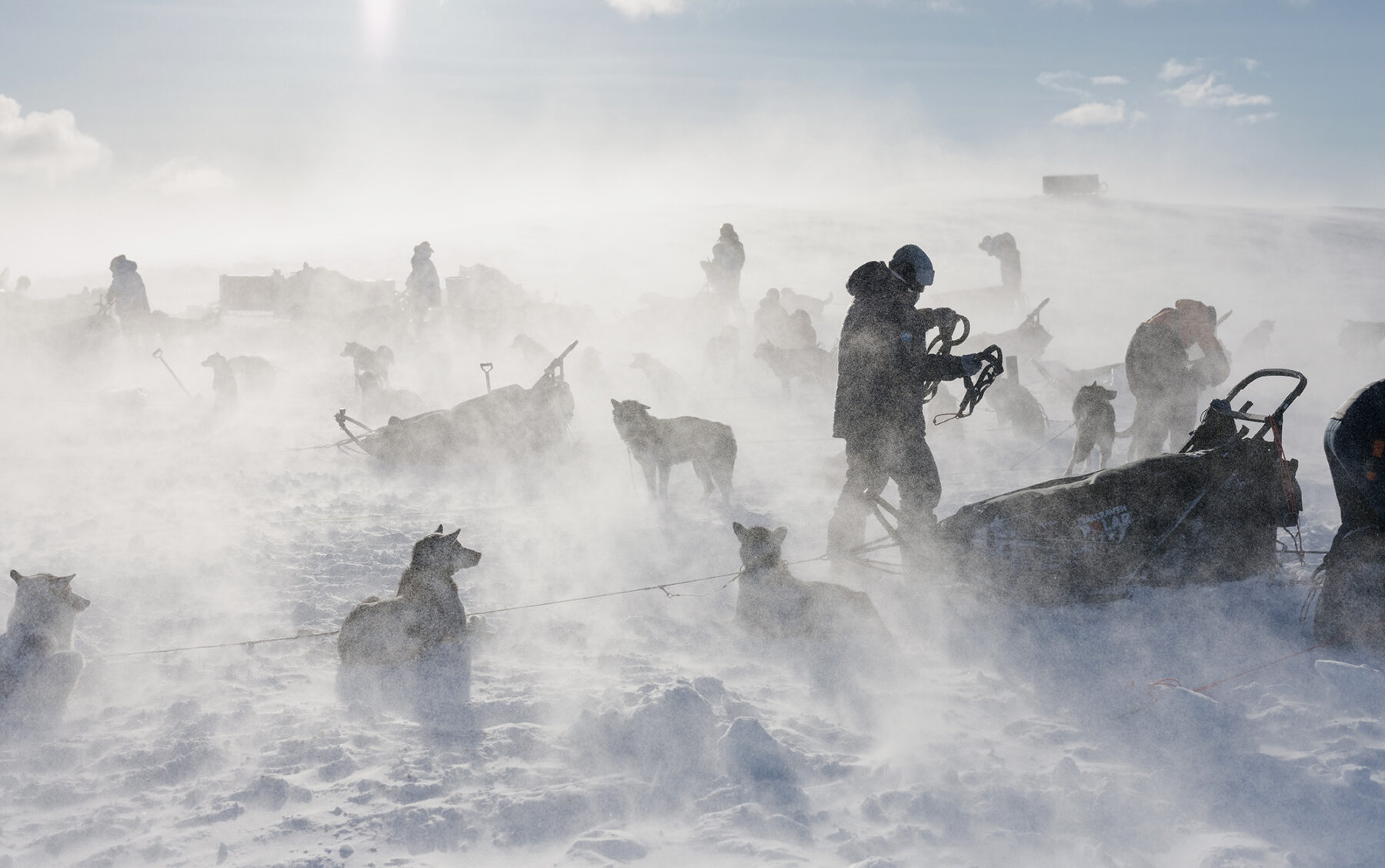
Fast forward, and I find myself only a stone’s throw (albeit a rather long hurl) north of the Arctic Circle for a taste of the Fjällräven Polar Challenge, a brainchild of Fjällräven’s founder Åke Nordin. Starting as a gruelling dog-sled race in 1997, the Polar Challenge evolved into a blend of social experiment and Arctic expedition. Fjällräven aims to inspire people to enjoy nature by demonstrating that anybody can become an Arctic adventurer with the right knowledge, equipment and support. In 2024, 20 people from over 31,000 applicants were selected for a five-day, 300km dog-sledding expedition across the Scandinavian Arctic. Participants endured brutal minus 30-degree temperatures but were rewarded with the Aurora Borealis dancing above tents at night.
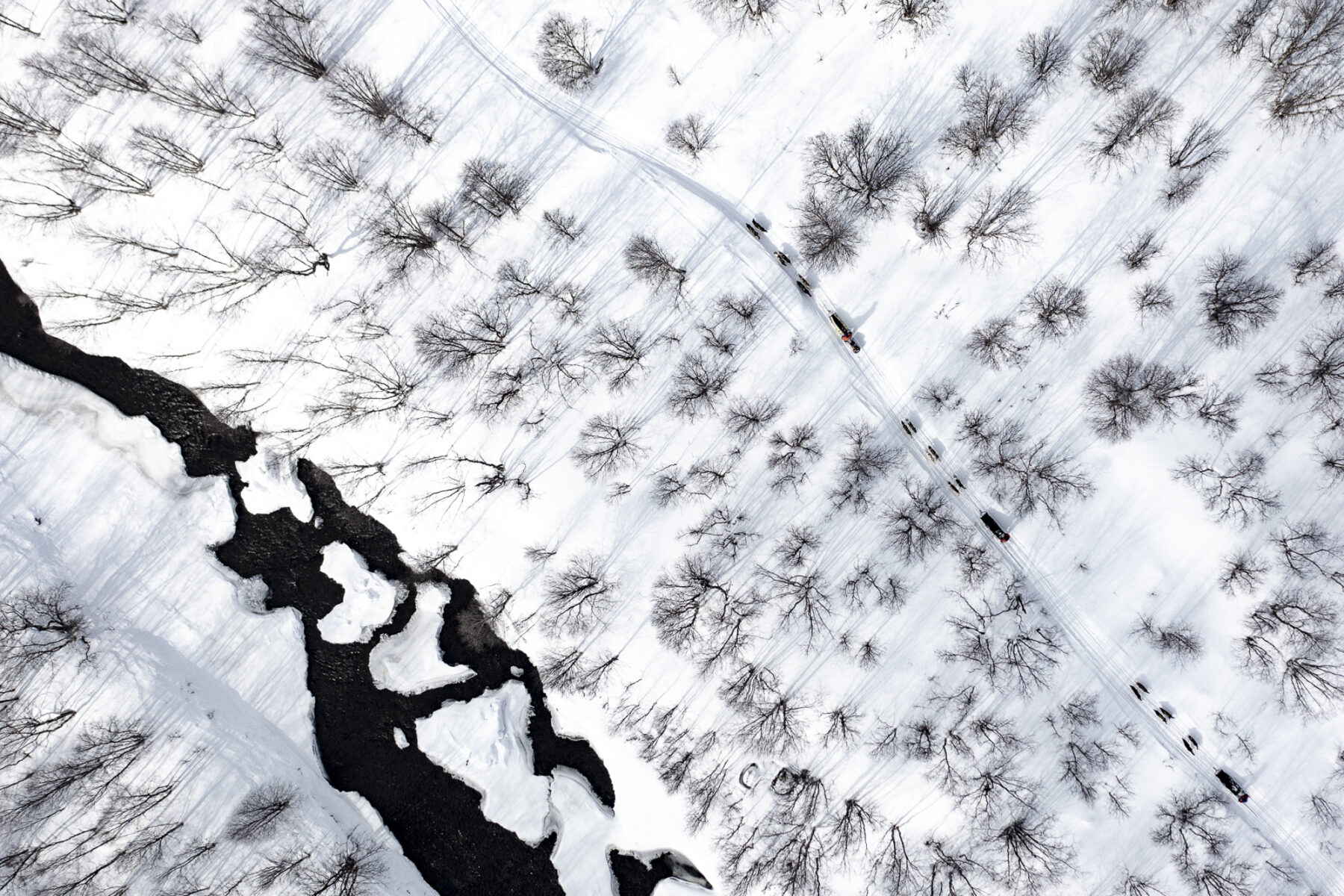
Intrigued by the idea of an apparel brand throwing novices into the Arctic, I eagerly accepted an invitation for a compressed three-day version of the Fjällräven Polar Challenge.
A new member of the team
I arrive in Kiruna, Sweden’s northernmost city, expecting frostbite, but instead, spring has sprung, and the frigid temperatures have given way to an almost balmy zero degrees Celsius. Thankfully, the waterways are still frozen, and it is with a mix of relief and trepidation that I layer up in thermals and waterproof gear at Fjellborg Kennels, ready to mush a team of excited huskies into the Arctic wilds.
Musher-instructor Melanie Sommerfeldt, a 2019 Polar Challenge participant, shows me the ropes, literally. She explains the essentials: gang lines, tug lines, and the all-important snow hook to prevent eager huskies from taking off without their musher – me.
My five-dog team, bred for endurance, can run 40km/h and cover up to 80km a day. Some wear booties to protect their feet; others have an ointment to keep their pads supple. “A musher must be in tune with the dogs,” Melanie tells me before we launch into our three-day journey. Soon enough, I am face planting snowdrifts and playing pine tree pinball 200km north of the Arctic Circle. It seems that whatever instrument I’m playing, I am out of tune.


Our first night is spent camping in the snow and eating army rations of dehydrated spaghetti bolognese. Despite the short distance covered throughout the day, it was a good training ground. The weather is milder than expected, and our sleeping bags are warm.
Day two is the real deal, with 50km of mixed trail offering ample opportunity to test my newfound twerking skills. Importantly, I am becoming a real musher. I check my dogs before myself, all before breakfast, and I am beginning to understand my team’s individual personalities. Each morning, they yelp and jump with excitement and given the chance, ‘Cosmos’ will lick me to death.

Amid the cacophony of other sled teams preparing to depart, I struggle to harness my team. But once we hit the trail, all grows quiet.
Close to poetry in motion
My lead dogs, Enya and Edith, are the smallest of my team, but they are intelligent and nimble and confidently lead the gang line. They regularly glance back to check in and ensure I’m still there. My point dog is the ever-loving Cosmos, who loves to cuddle but tends to straddle the gang line, causing no end of grief, whilst my burly wheel dogs are Cooper and Enzo. Coops is strong, and has a great rhythm, but I rename Enzo ‘Sidewinder’ for his slight crabbing stride.
On the move, the dogs settle into a rhythm. I watch over them, occasionally offering encouragement that they seem to appreciate with a quick glance back. They regulate their body temperature by panting and, every so often, scooping up snow with their tongues to rehydrate and cool. Together, my motley sled crew offer immense ‘poodle power’ and happily hauls my kit and my 90kg frame across an Arctic landscape.
Soon, I skirt pine, spruce and willow with the best of them. Throughout my entire journey I only hit the ground once and I swear Enya and Edith’s disdainful look slowly evolves into that of understanding and even acceptance by day’s end.
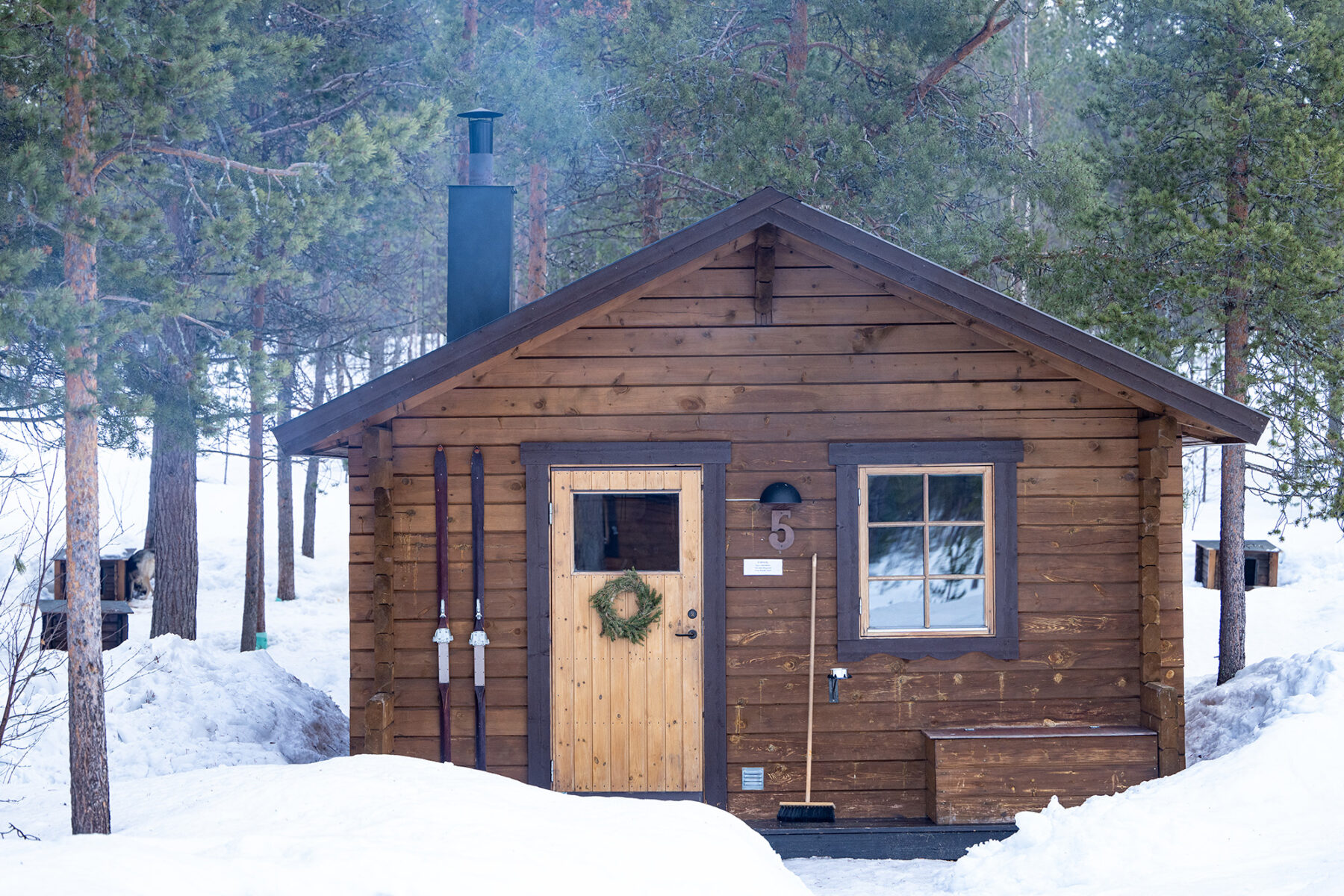

A long 50km day sees us loop back to Lake Väkkärä for our second night, swapping tents for the warmth of Väkkärä Lodge’s wood-fired sauna and log cabins. The luxury comes with a catch: an invigorating ice plunge in near-freezing lake water. A hole is cut in the solid ice, and expecting the worst, I am pleasantly surprised when the revitalising dip reignites childhood memories of surfing Australia’s south coast in winter with only a leaky wetsuit and second-hand surfboard.
A short time but a lifelong memory
Our final evening sees us feast on high-calorie dinners. For the dogs, it is raw meat, fat and kibble; I settle on sautéed reindeer and freshly caught Arctic char accompanied by potatoes and lingonberries.
My Norwegian dogsledding counterpart, Anton, sleeps under the stars, hoping for the Northern Lights. I spend an hour on the lake ice, searching the sky, but the Aurora remains elusive. I retreat to the warmth of our cabin to sleep soundly until the barking of dogs wakes me.
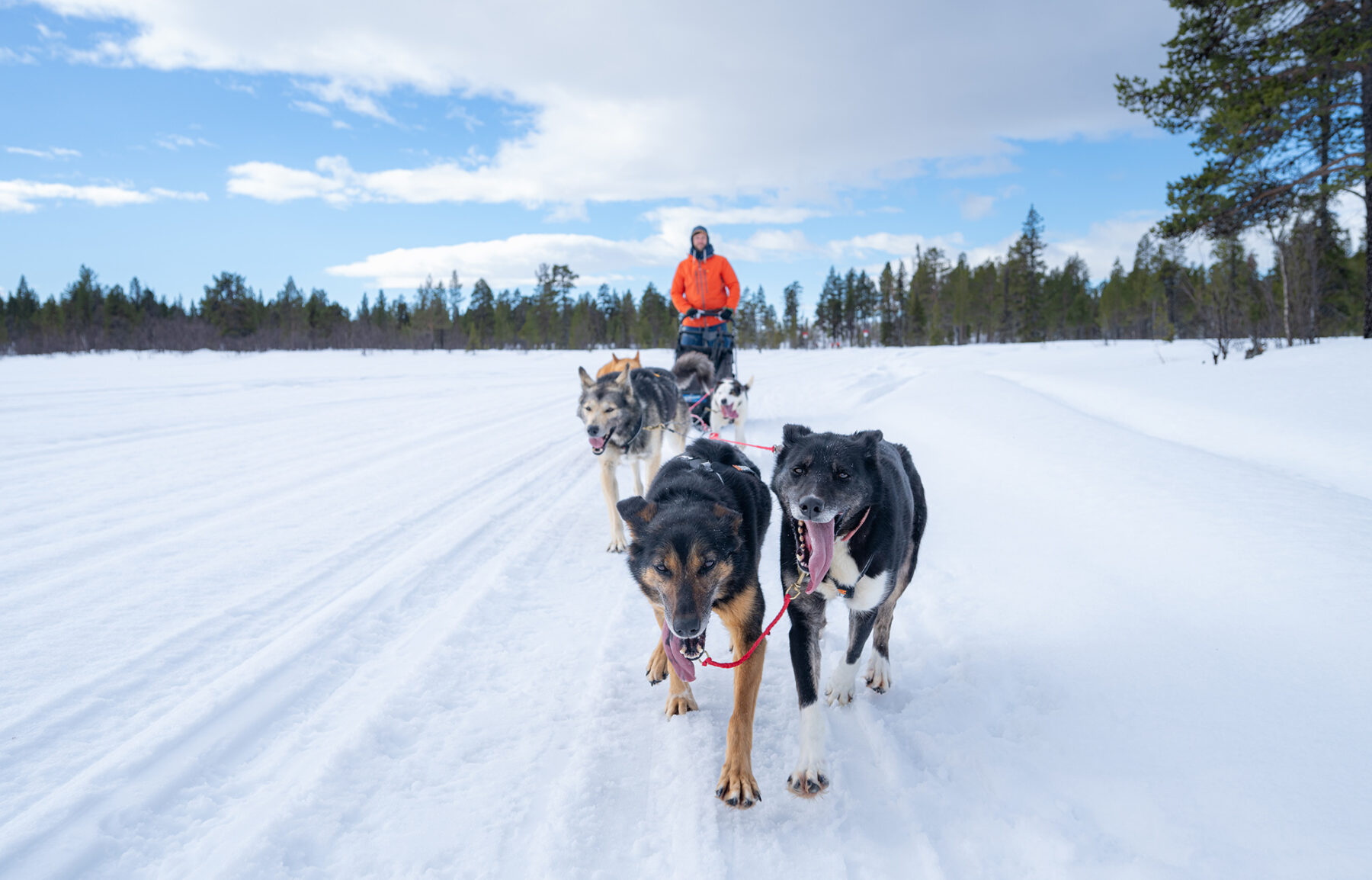
Harnessing up for my final day is bittersweet. I marvel at the bond formed between my dogs and myself in only a few short days and feel sad to leave as we are just hitting our stride. Back at the kennels that same afternoon, I say goodbye to my new furry friends, accepting their affectionate licks. There is no doubt we have learned from one another. I taught them that an Aussie always carries board shorts for those unexpected dips, and they taught me to twerk like a pro. I never mastered the ice-skating poo-on-the-move, but maybe that’s a good thing. It’s not quite as appreciated among humans as in the sled dog world.
